How to Select the Best Siding for Your Home
There are several factors involved in selecting the best siding for your home, but the process often starts with deciding on the siding material. Siding, along with your roof, serves as the armor to protect your home. But armor doesn’t have to be dull and boring; it can still be a beautiful addition to your home’s exterior.
Why Siding Is Important
Your home’s siding serves two important functions. It protects your home by weatherproofing it and it’s a major factor in setting your home’s overall style. Adding new siding can give your home an immediate makeover, enhance curb appeal and increase your resale value. Few other exterior improvements will give your home as dramatic a facelift as new siding.
You know the saying, “You never get a second chance to make a first impression.” If your home’s siding is old or damaged, that doesn’t send the best impression. New, quality siding will dramatically improve the appearance of your home and give visitors a great impression..
Exterior remodeling projects, from new siding to window replacements to a new roof, dominate the list of projects that offer the largest return on investment. This is because so many potential home sales are decided on the exterior appearance of the home.
First impressions definitely are a factor in the real estate market. If a home’s exterior is dated or damaged, many home buyers won’t even choose to look inside. Buyers will often assume that the exterior of a property reflects the interior.
High quality siding also helps ensure your home is protected from the elements and stays in the best condition possible. It keeps your home’s interior warm in the winter, cool in the summer, and improves overall energy efficiency.
Does Your Siding Need to Be Replaced?
If you have siding on your home, but it is loose or cracked, this can allow moisture, insects, or rodents to enter, which can lead to expensive structural damage. If the siding on your home is cracked, loose, fading or peeling, it may be time to replace it. Here are some other signs that could indicate it’s time to reconsider replacing the siding on your home:
- Blistering in the siding can be caused by excess heat or moisture. It should be replaced with a siding that will resist those elements.
- Hail damage will show as dents, the size of which depends on the size of the hail that hit your home.
- Dry rot can form on wood siding exposed to moisture. The fungus that develops causes the wood to decompose.
- Your energy costs have increased considerably. This could mean the insulation in your walls has deteriorated, causing your heating and cooling to escape. New siding, including insulation, will reduce the utilities expense drastically.
- If your interior paint or wallpaper is peeling, it could mean that moisture is entering in from the outside.
There are other situations when you may want to consider replacing or installing siding that are more related to personal preference. If you’re just sick of staining or painting that wood, you’re tired of the outdated colors, or you want a curbside appeal that pops, adding new siding is a great way to resolve these woes.
Types of Siding for Your Home
If you are ready to shop for new siding, you have several factors to consider: appearance, durability, maintenance, quality, affordability are some. Siding products have come a long way in the last few years, and the range of colors and styles have never been greater. There are several popular siding options to consider. Each type of siding has pros and cons to consider. Let’s take a look at four of the most popular siding options on the market:
Vinyl Siding
The low cost and easy maintenance of vinyl siding has helped it become the most popular siding choice in the United States. Vinyl needs no painting. It won’t warp or twist, and when installed properly, it’s impervious to insects and water. The downside of vinyl siding is that it can rattle, crack, melt and burn.
Despite its popularity, you need to consider your style preference and whether the architecture in your neighborhood makes the realism and cost of fiber cement or even real wood a more appropriate choice. Many design professionals and homeowners are turned off by the “plastic look” of some of the vinyl siding products on the market.
Wood Siding
Although wood shingles and clapboard offer traditional charm, they can be expensive – wood clapboard is less than shingles but still more than vinyl or fiber cement. Wood is resistant to impact, but it can warp, twist, and burn. Wood is also vulnerable to rot, insect, and woodpecker damage. Wood can be painted or left natural, and it’s available factory-primed and painted. If it’s painted or stained, it requires periodic refinishing.
Brick Siding
Made from fired clay, brick is one of the oldest types of building materials and remains popular today. Genuine brick is available in a variety of sizes and colors. Brick is extremely durable and often lasts for hundreds of years.
Today, brick siding is usually a veneer constructed around the outside of a home’s wood frame structure. Mortar holds it in place. Both real brick and brick veneers are more expensive than other siding options to install. Both are durable and require low maintenance. Brick and brick veneers are resistant to extreme temperatures, moisture, and insect damage.
Fiber-Cement Siding
This blend of cement, sand, and cellulose looks the most like real wood and costs only a little more than vinyl. Fiber-cement siding can also offer the look of masonry or stucco at a lower cost.
Fiber-cement siding comes in a wide array of textures, styles, and colors. It is virtually maintenance-free and nonflammable. It’s more durable than wood because it is resistant to rot, insects, water, and temperature changes. It comes factory-primed but also can be ordered pre-painted. Whether primed or painted, fiber-cement must be refinished or painted periodically, though far less often than wood.
James Hardie Fiber Cement Siding
Whether you’re interested in a classic wood clapboard look, rustic shingles, paneling or some other style, there’s one siding company you can always count on: James Hardie..
Offering fiber-cement siding in a wide variety of styles and colors, siding from James Hardie resists rot and weather damage and its colors won’t fade over time. James Hardie siding is more durable than any other material on the market and requires virtually no maintenance. All James Hardie siding products come with a 30-year, non-prorated warranty and trim products come with a 15-year, non-prorated warranty.
No type of siding is maintenance-free; however, fiber cement siding doesn’t require as much maintenance as siding made from other materials. Washing it periodically with a standard garden hose will keep it looking clean and fresh. Repainting is needed, but only every 10-15 years.
James Hardie fiber cement provides a 15-year warranty against chipping and peeling on their pre-finished product. However, fading will occur over time whether you choose the primed version or the pre-painted version, so you will eventually need to repaint your fiber cement siding.
Fiber cement siding may cost a bit more up-front than other siding types, but you need to consider the overall return on investment. Professional installation by a certified contractor is a must, but you’ll save in ongoing maintenance costs. The beauty and functionality of fiber cement siding will last for up to 50 years.
Types of James Hardie Siding and Products
There are so many choices available with James Hardie, all of which combine to present a home exterior that will be the envy of your neighbors.
- HardiePlank® lap siding is James Hardie’s best-selling fiber cement siding. It comes in four different styles:
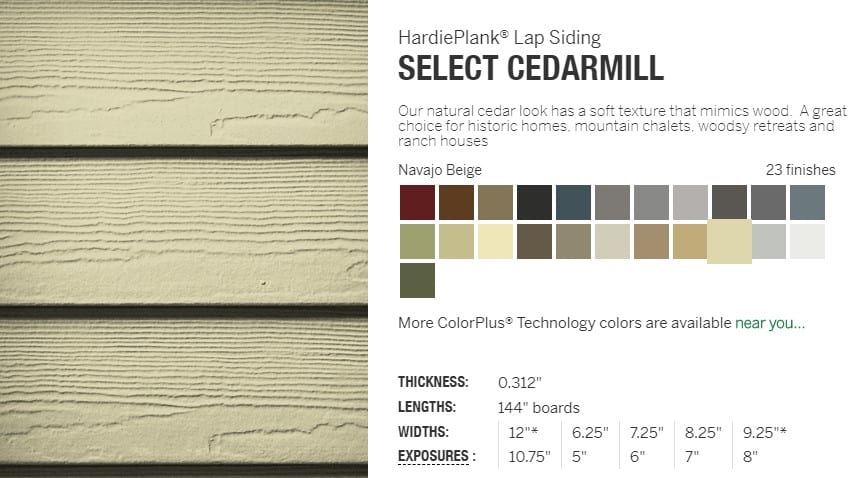
Select Cedarmill has a soft texture that mimics wood grain.

Smooth is just as the name implies: a simple clean look.
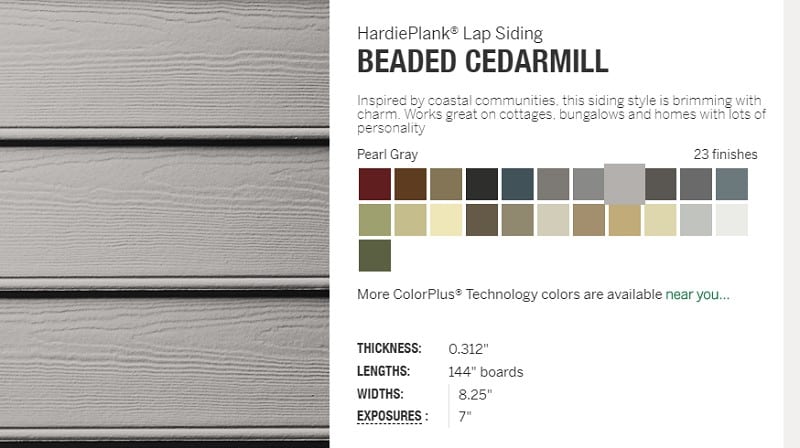
Beaded Cedarmill has the “bead” or edging on each panel.

Beaded smooth is the smooth siding with the bead added.
- HardieShingle® siding is sometimes referred to as “shake” siding, often seen on Cape Cod style homes. This siding type comes in two styles: staggered edge and straight edge.
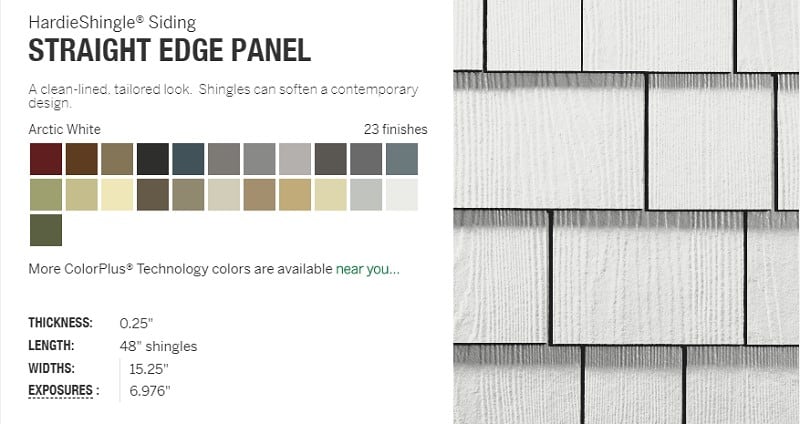

- HardiePanel® vertical siding can be used alone or combined with other styles to create a visually appealing result on your home. It is offered in four styles:
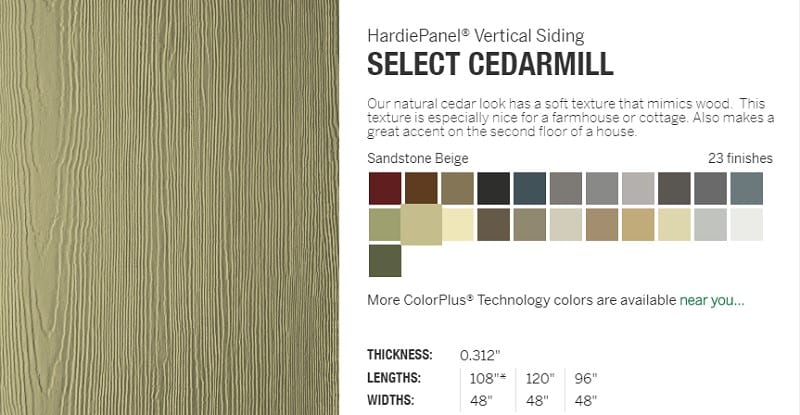
Select Cedarmill has a soft texture that mimics wood grain.
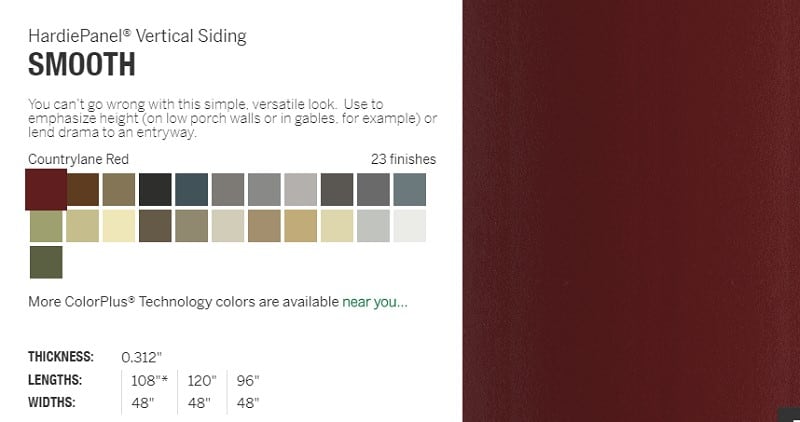
Smooth offers a simple and clean look.

Stucco is a classic choice.

Sierra 8 combines texture and linear detail that adds dimension.
- HardieTrim® boards offer the finishing touch to complement your siding project. They provide the same long lasting beauty and durability as James Hardie siding products. These trim products come in a variety of styles:
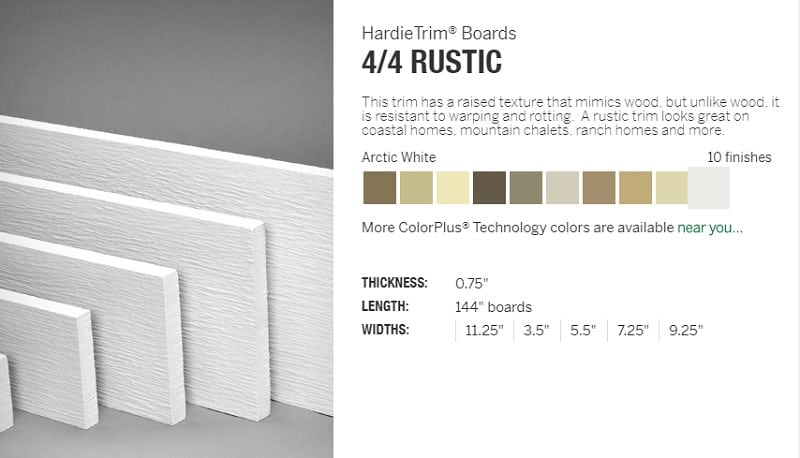
4/4 rustic trim has a raised texture that mimics wood.
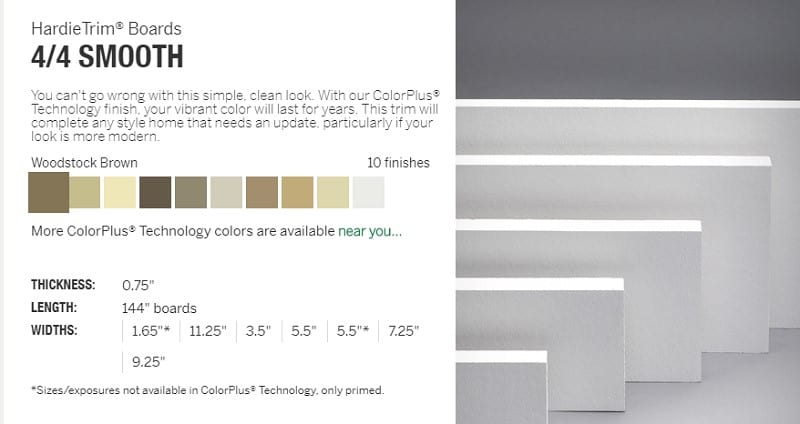
4/4 smooth provides a simple and clean look.
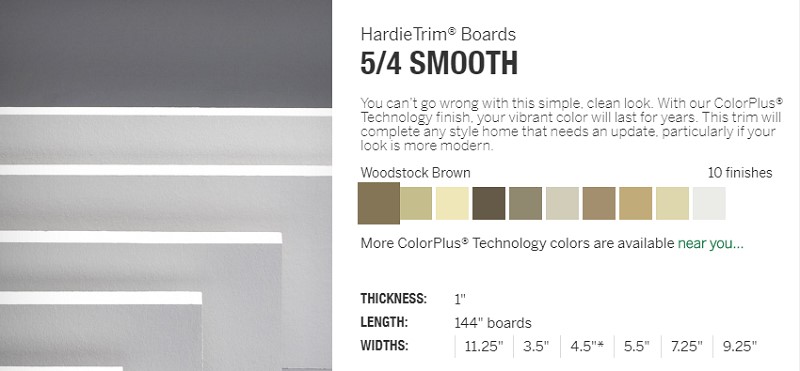
5/4 smooth

Smooth batten boards
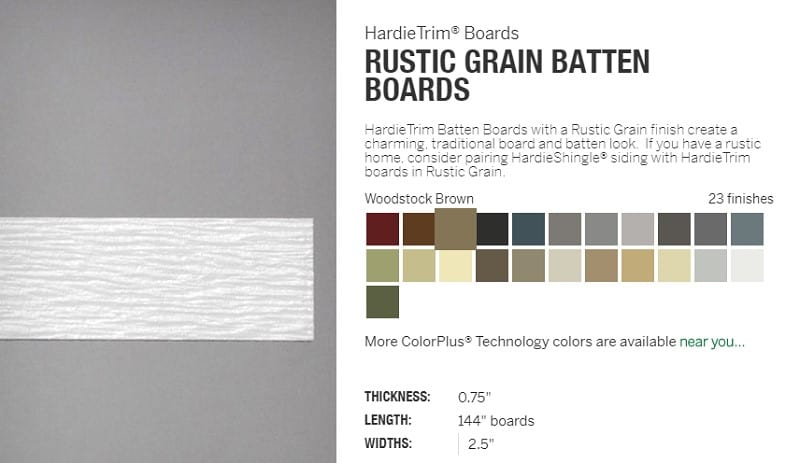
Rustic grain batten boards
- HardieSoffit® panels will complement the other James Hardie siding materials to cover the underside of your roof eaves and exterior porch ceilings. They are offered in both vented and unvented options to satisfy local building code requirements and/or your personal preferences.

Choosing the Siding that’s Right for You
You’ll need to weigh the factors involved before making a decision on what type of siding to get installed on your home. Cost, durability, warranty, quality, return on investment--all these are important considerations.
Let Banner Construction help you decide on the siding choices that meet your needs. Contact us today to find out more!
